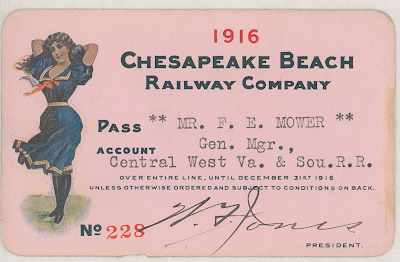DC Transit No. 1101 at Fishhook Loop - this car was the first of the history making PCC street cars to be delivered to the Capital Transit Company in Washington, DC. Photo by Bill Monaghan.
Preservation of the history of Washington DC's street cars goes far beyond the street cars themselves. In fact, certain elements of Washington's street car history have been directly incorporated into the fabric of the Trolley Museum - one subtle example is the script (font) in versions of our official logo, as seen below.
Notice the "D.C. Transit" script on the side of the car is virtually identical to the script in our logos above. This car, DC Transit 1101, was originally delivered to the Capital Transit Company; as such, the lettering on the side once read "Capital Transit" in the same style script as you see now.
Photo by Bill Monaghan.
Capital Transit No. 1286 at Union Station - notice the small logo at the rear of the car - this is what the script logo replaced. When delivered to the Capital Transit Company, DC Transit 1101 (in the color photos above) featured a small logo like this. Photo by Leonard Rice.
Capital Transit No. 1332 at Brookland - notice the new "script" version of the logo. This is the original version of which "DC Transit" was later based off of, and most recently the script in our logos. Photo by Leonard Rice.
Al once recalled a visit from Ed Merrill, President of Capital Transit; Mr. Merrill was not thrilled with the added expense for additional lettering on the sides of street cars (the street cars, at the time, only had a small Capital Transit logo on each side as seen above.) "The people know the cars belong to us" he supposedly declared.
In the 1990s, Wesley Paulson, presently serving as the NCTM Director of Development and Treasurer, was working at Maryland College of Art and Design - after a discussion with the late Ken Rucker, former NCTM President and Director, it was agreed to ask a college calligraphy instructor to adapt the Capital Transit script for Museum letterhead. After research, the calligrapher pointed out that Capital Transit was hand drawn and is not based on any standard script font (looking carefully at the Capital Transit script one can see inconsistencies in the "t", "i" and "a" and if you look at the DC Transit logo it seems the "D" is an adaptation of the reversed "C".) Adding to the complexity of recreating the script, the uppercase "N" & "M" and lower case "o," "e," "y," "u," & "m," all of which are present in "National Capital Trolley Museum," did not exist in either of the original "Capital Transit" or "DC Transit" versions and thus has to be created, out of skill and educated guessing, to the Capital Transit script alphabet created for museum use. The calligrapher made several sketches of the new script before the current design was selected, and it remains in active use by the museum today.----
Thanks to Wesley Paulson for contributing the information necessary for this post, and to Bill Monaghan, unofficial NCTM photographer, for continuing to provide high quality images for use by the museum.










